

Damion Smy
2026 KGM Musso ute images leaked
39 Minutes Ago
The brand-new full-size Range Rover sets a new standard for luxury motoring, taking the upper-large luxury SUV segment to new heights.
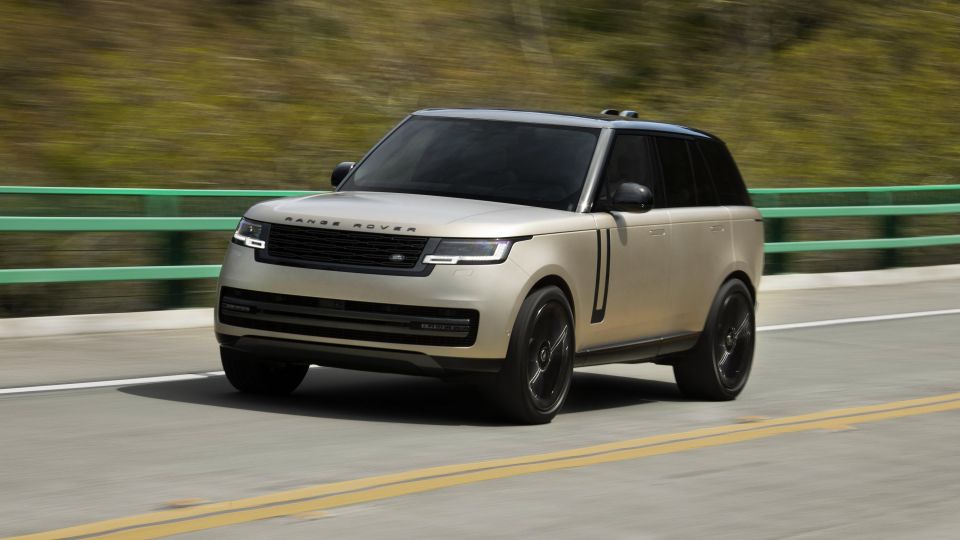
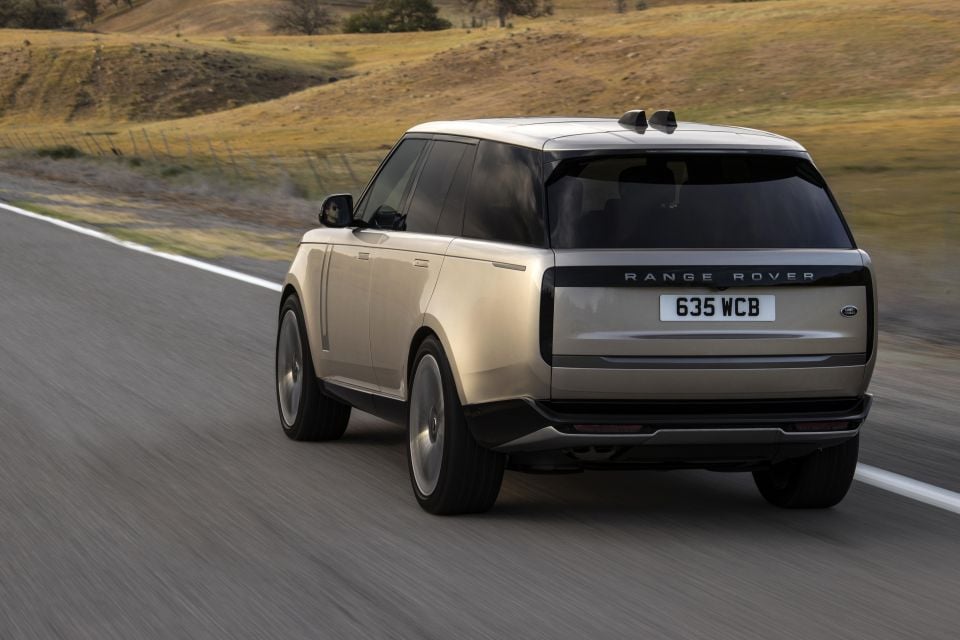

Quickly see how this car stacks up against its competition. Select any benchmark to see more details.
Where expert car reviews meet expert car buying – CarExpert gives you trusted advice, personalised service and real savings on your next new car.
The newRange Rover is the best luxury SUV you can buy right now. It’s as simple as that.

What makes the soon-to-be-released fifth-generation Range Rover the ultimate in luxury motoring is not any particular feature or technology, but an accumulation of more than 50 years of refinement that has brought with it everything that was right with its predecessors and taken it into the modern age.
The historical significance of the full-size range Range Rover cannot be understated. You can read our story about the origins of the luxury SUV, but to summarise, it started all the way back in 1969, well before SUVs were a common thing, when Rover created a more luxurious version of its Land Rover product, aptly named Range Rover.
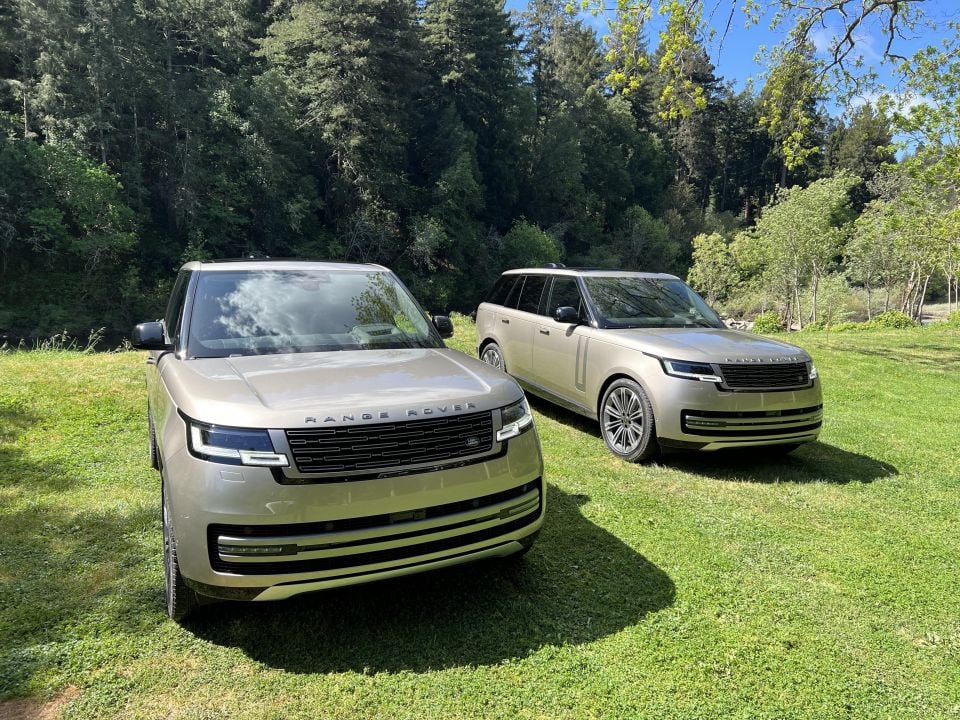
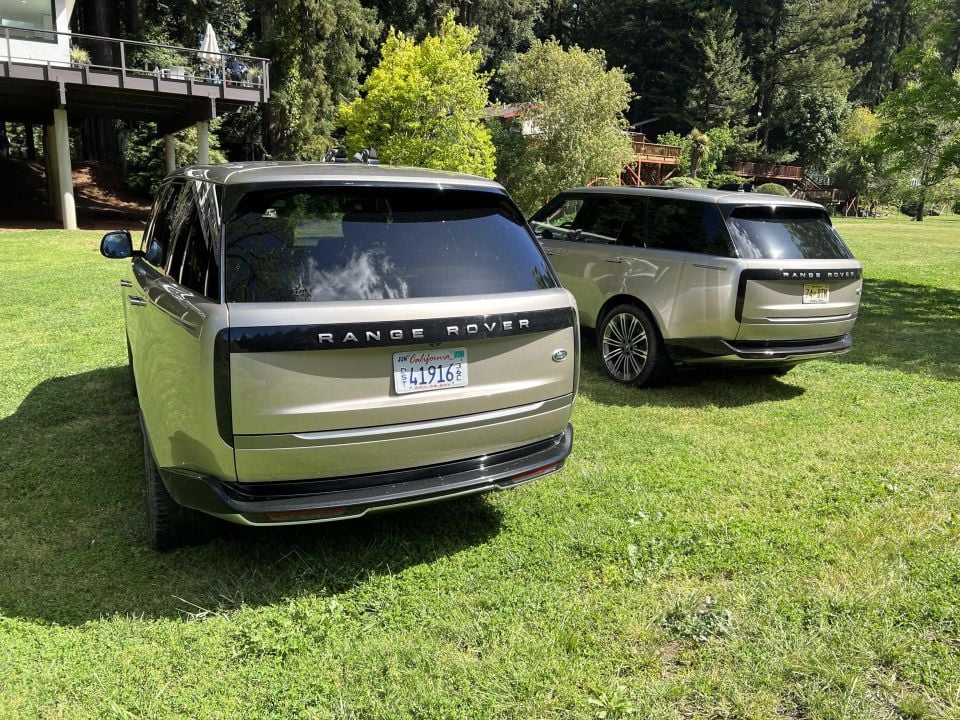
Mercedes-Benz and BMW did not launch luxury SUVs until the 1990s (Audi in the 2000s) so while they have invested billions in catching up with the original, those that value historical significance and understand generational refinement, grasp the value of Range Rover’s history. Now, more than five decades later, the British brand has once again redefined the segment.
Nonetheless, reimagining an icon is no easy feat. Consider brands like Hermès, founded in 1837, and Louis Vuitton which came into existence in 1854. These two brands have continued to not just stay relevant, but become icons of luxury with their patterns and artistic expression becoming synonymous with opulence.
Their success is similar to the Range Rover, which continues to reinvent itself without losing its heritage. Ultimately though, no brand can rest on its laurels if it intends to strive for the best as brand loyalty only goes so far.
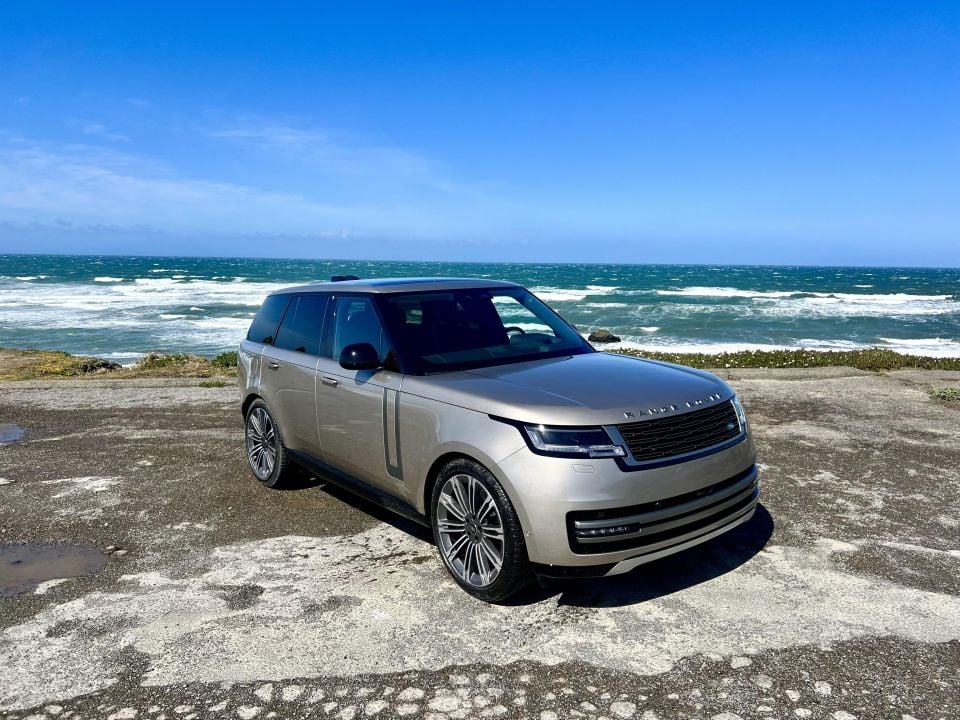
The fifth-generation Range Rover is expected to arrive in Australia around August-September in limited numbers and is available with either a standard- or a long wheelbase. You can also have it with a four, five or – for the first time – a seven-seater configuration. Also for the first time, the Range Rover will be offered with a BMW-sourced 4.4-litre twin-turbo V8, a new plug-in hybrid with 125km of electric range, and a new Range Rover SV spec level.
With a very strong order bank already seeing new customers likely waiting until 2023 for Australian deliveries, we flew all the way to Sonoma in California to find out why it’s worth the wait.
The first thing you will notice about the new Range Rover is that, from the front, it looks somewhat similar to the previous generation. Although they share no actual exterior parts, the similarity in design is in part about keeping the heritage and the face of the brand very much alive.
As exterior design manager, David Uburah, told us – you will always know there is a Range Rover behind you.
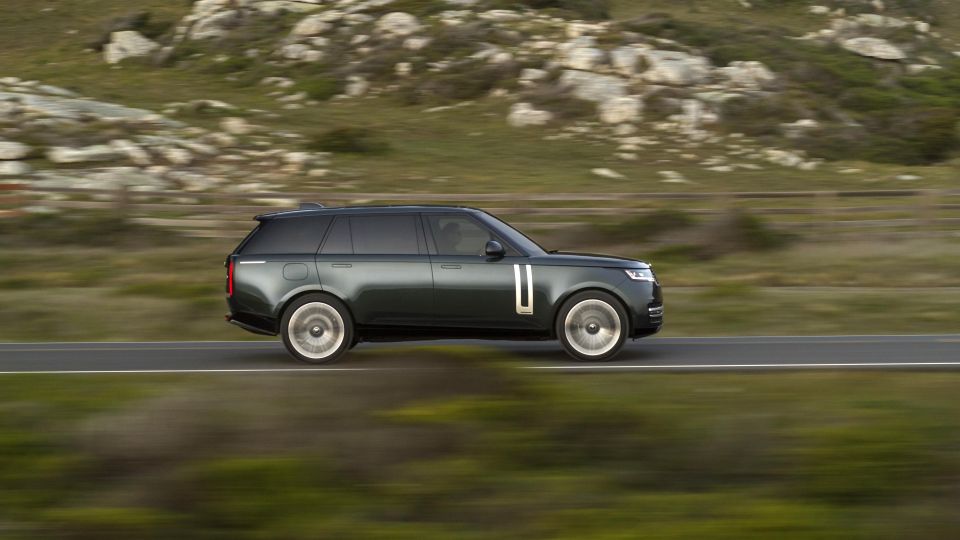
It’s the rear-end that has received the biggest update with the ‘hidden-until-lit tail lights’ which the brand claims to be a world-first. The full gloss-black rear segment appears as one piece until the bright red LEDs (world’s brightest in a vehicle according to Range Rover) of the brake and tail lights are in operation.
It’s a departure from the previous generation’s larger rear lighting system, but on the road it looks very much like a modern interpretation of the same concept.
The rear also tapers off nicely so that it actually looks much more compact with the new rear lights, despite measuring a healthy 2.2m wide. The new Range Rover is 5058mm long, 2209mm wide and 1870mm tall, add 200mm in length for the long wheelbase version.
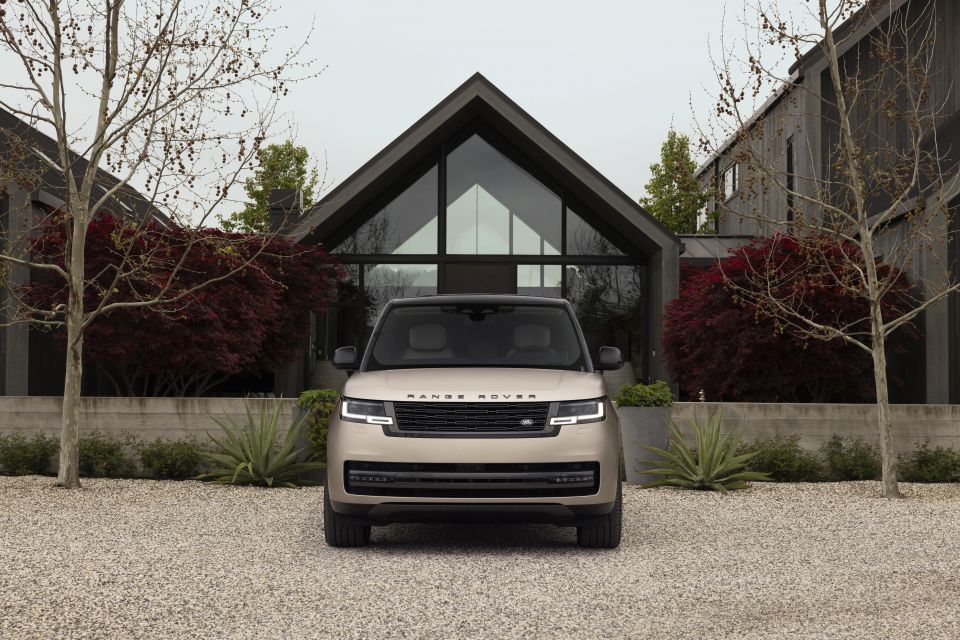
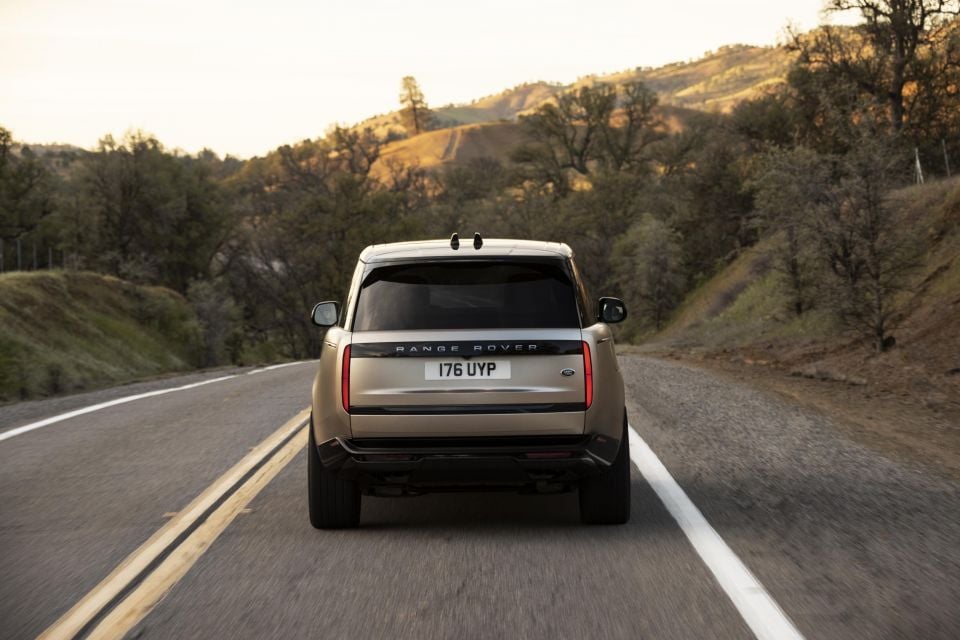
As is typical of Range Rover, the exterior remains an elegant expression of what the brand refers to as reductive modernity, a design language started over 10 years ago. The design team went through more than 100 iterations of designs before they settled on what became the new Range Rover you see today. The idea of less is more is not new to automotive design, but Range Rover has taken it to new extremes with next to no unnecessary lines or design elements.
Although hard to appreciate on first glance, bringing the British designer’s ideas to reality took some serious innovation that brought about some firsts for Range Rover. From the laser-welded interface rather than a traditional roof finisher, to the flush door handles and our favourite, the beautifully engineered waist finishers that see the rounded edge of the doors meeting the glass in a simple, clean finish, the Range Rover’s exterior design is subtle in its beauty.
It also wouldn’t be a Range Rover if it didn’t elicit an audible ‘wow’ when the doors first open and as we will explore, it certainly does that.
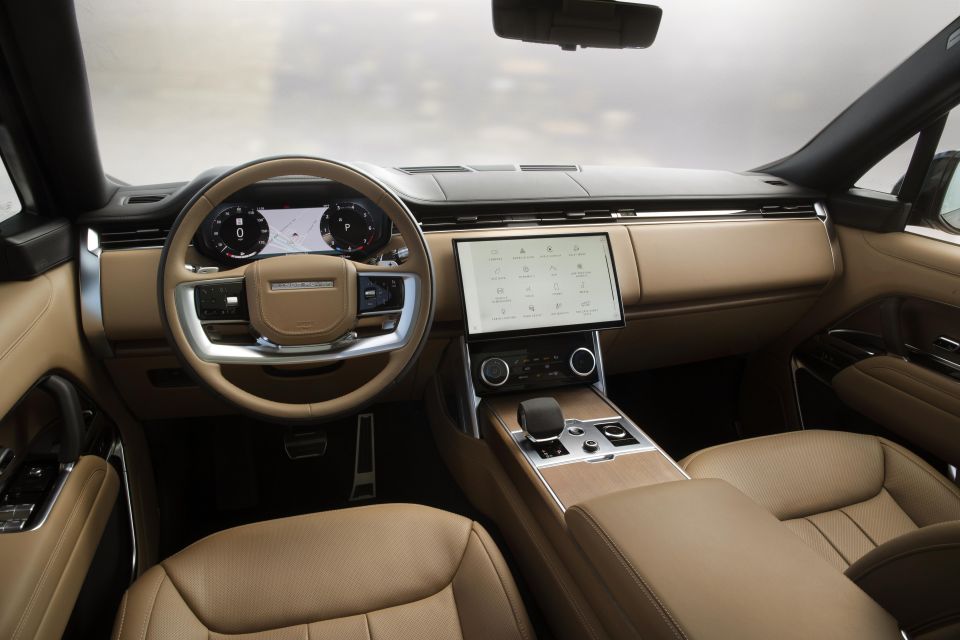
Pricing kicks off at $220,200 before on-road costs for the Range Rover SE D300, and extends to $312,500 before on-roads for the Range Rover First Edition P530. The SV version, which we will cover in a different review, starts from $341,300.
2022 Range Rover pricing (MY23):

Buy your new car without the stress. It's fast, simple and completely free.

Great service from Travis and team, second time I have used this business would not hesitate to recommend them to anyone
Craig C.
Purchased a Ford Ranger in Sunshine Coast, QLD
CarExpert helped Craig save thousands on his Ford Ranger, now let us save you on your next new car.
Find a dealThere are a fair few versions of the new Range Rover when it comes to interior luxury, the best of which is by far the four-seater configuration in the SV which has – arguably – the best interior of any mass-produced SUV on the planet today (we are including the Bentley Bentayga in that). We’ll dive into the SV in a different review.
For now we will focus on the ‘standard’ Range Rover which comes with a range of upholstery options to please vegans and lovers of high-quality leather goods.
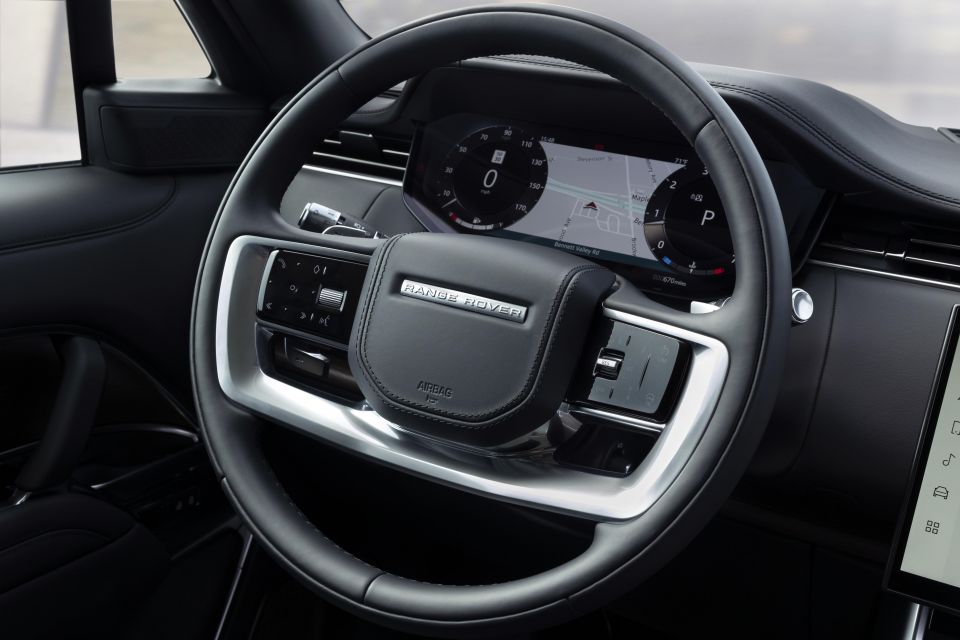
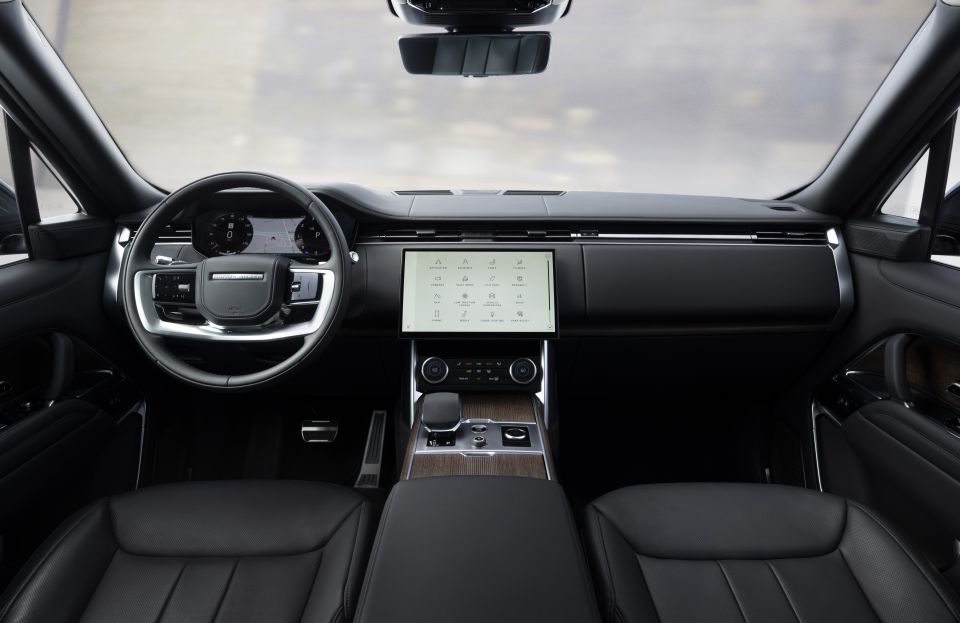
Jaguar Land Rover (JLR) as a group has for years used what we have always felt to be the best in automotive leather material bar, perhaps, high-range goods from Lexus or Rolls-Royce.
From its Windsor leather in previous products to the new ‘responsibly produced leathers’ – which we feel has the same tactile sensation as an Eames Sofa – they’re beautifully soft to the touch but also feel very durable.
Even so, if semi- and near-aniline leather isn’t your thing, Range Rover is using wool-blend material from Danish textile company Kvadrat, itself a long-running company who has made material for the likes of the Gherkin in London, the Walt Disney Concert Hall in Los Angeles, Museum of Modern Art in New York, Guggenheim Bilbao in Spain, Yves St. Laurent in Paris and the Oslo Opera House in Norway. So, good pedigree then.
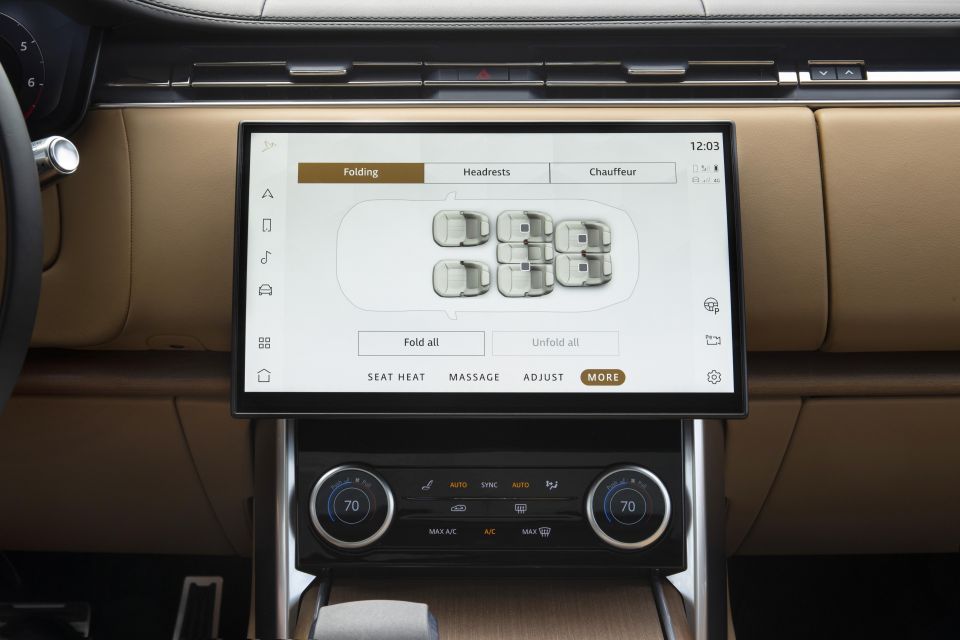
The material aside, what makes a Range Rover a Range Rover is the open airiness of the cabin, giving a sense of abundance in space. The command seating position for the driver is unlike any other luxury SUV and brings with it an instantaneous sense of calm when you jump inside.
Every surface and touchpoint is coated in something that feels sensational to touch. Lovers of fine goods will be thrilled with the attention to detail on the multitude of surfaces. But it’s not just the materials, the seats themselves feel very supportive and deeply comfortable both in the front and rear.
We feel the five-seat configuration will easily carry five normal-sized adults for long trips with plenty of head-, leg- and knee room. The two additional seats for seven-seat variants, meanwhile, while providing copious room for kids and teenagers, are still a very reasonable option for adults when you need to fit seven.

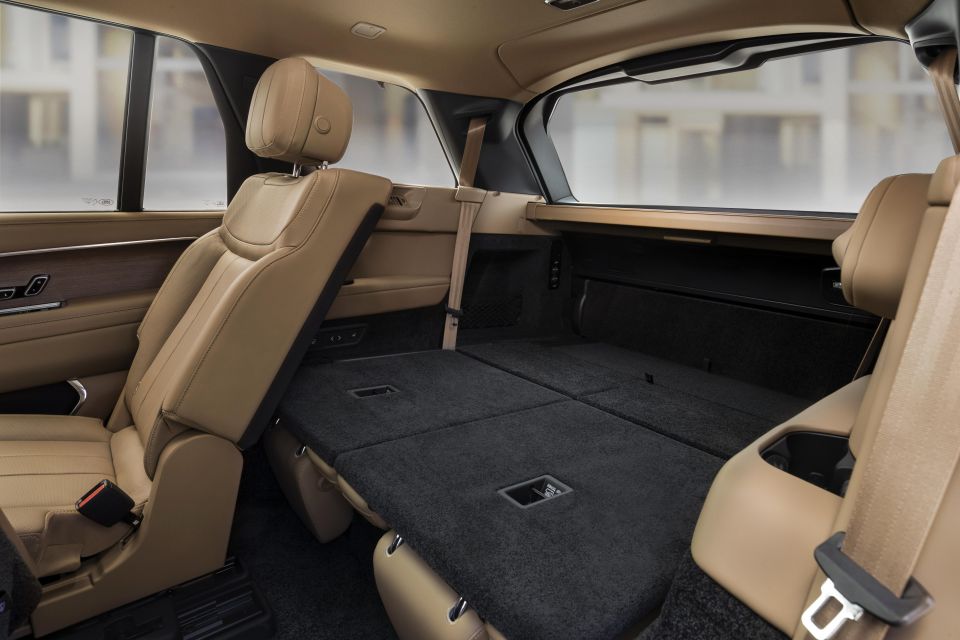
The interior is, for us, where Range Rover has managed to continue to stay ahead of the Germans. While Mercedes-Benz, Audi and BMW produce some spectacular interiors (check out the new BMW iX), their reliance on using technology to gloss over less tactile materials and surfaces is almost at opposite ends from the serenity of Range Rover’s offering.
That’s not to say that Range Rover has glossed over tech, quite the opposite in fact. Once the company’s Achilles heel against its much better-funded German rivals, Range Rover has really stepped up the technology game with its Pivi Pro infotainment interface that offers haptic feedback. The customisable home screen is designed to make 90 per cent of tasks no more than two taps away, and offers pinch-to-zoom functionality like a smartphone.
There are two screens up front, a 13.7-inch digital instrument cluster sitting behind a glass panel backed up by an augmented reality head-up display, nicely complementing the rather massive and curved 13.1-inch centre touchscreen.

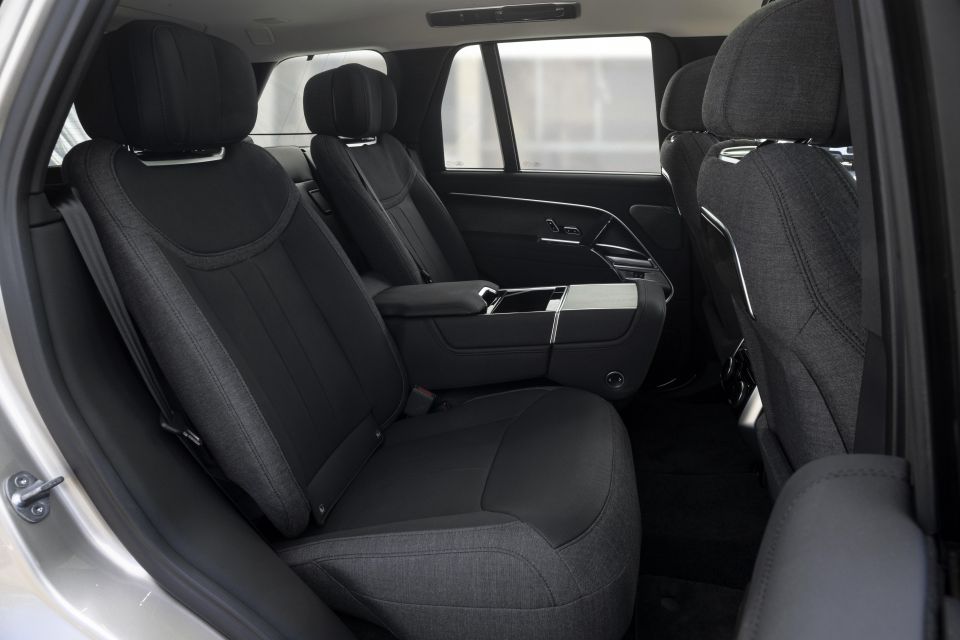
We found both displays to be of super high-resolution and very quick to respond to both touch and voice commands (using Amazon Alexa).
It took a bit of fiddling to get used to be the operating system, but once you understand the basics working out where to go and how to access the numerous features is relatively straightforward. We also really appreciate the fact Range Rover has kept the air conditioning controls free from the screen.
There is support for both wireless Apple CarPlay and wireless Android Auto, and we were delighted to see a 15W wireless phone charger. Even though Apple currently limits even its latest iPhone 13 Pro models to 7.5kW (unless using a MagSafe device which no vehicle has integrated yet), future versions of iPhones will no doubt make use of the the higher charging speeds.
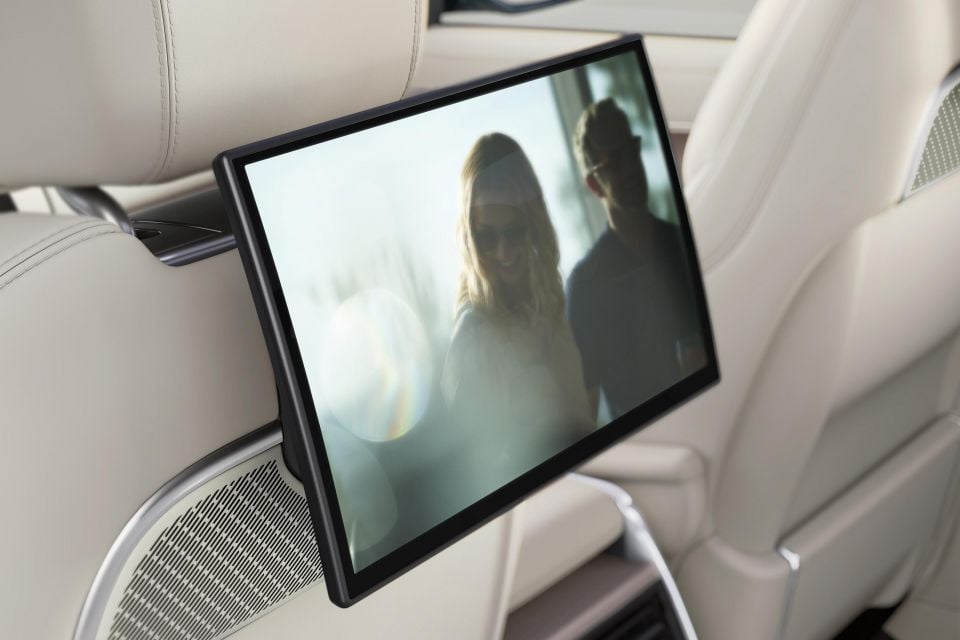
Moving to the back presents a new rear-seat entertainment system that offers twin 11.4-inch touchscreens mounted on the rear of the front seatbacks.
You can plug in a device via the HDMI port or make use of their Wi-Fi capability to stream services direct. It’s a nice feature, although it’s more than likely an iPad will be the most common device used on the rear seats rather than a seperate screen.
Our biggest surprise was actually the available eight USB-C sockets, one in particular located in the second row that actually offers up to an incredible 60W, which will not only rapid charge an iPhone or iPad, but will actually charge a full-size MacBook Pro as well – extremely handy if you intend to make long trips and do some work along the way.
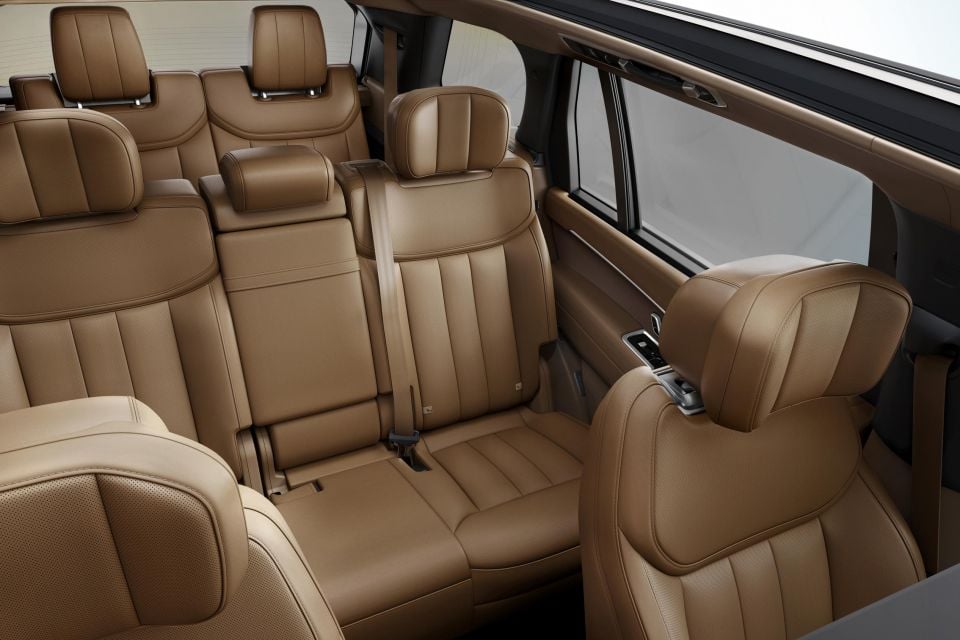
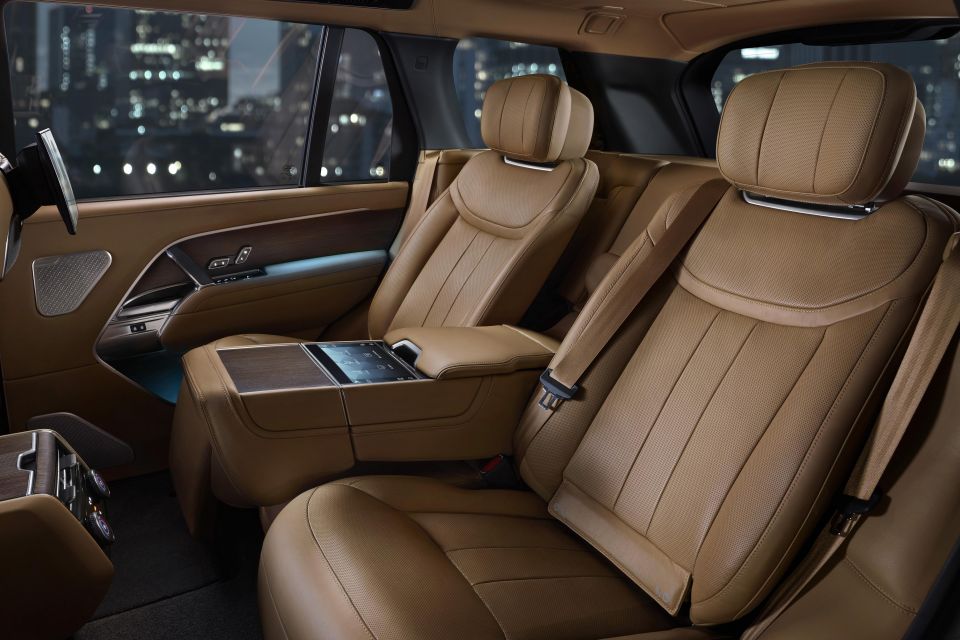
Where expert car reviews meet expert car buying – CarExpert gives you trusted advice, personalised service and real savings on your next new car.
We didn’t have too much time to play around with the stereo, but can report that even the ‘base’ 18-speaker system is absolutely top notch. If you go all out, you can upgrade it to a 1600W 35-speaker system, which even has speakers in the headrests that work both for sound and noise-cancelling.
Range Rover promises its infotainment system won’t be orphaned with the release of the car and says over 70 modules can receive over-the-air updates, making it more likely than ever any bugs in the infotainment and beyond will be fixed with software patches as time goes on, much like your iPhone or Tesla.
The doors can also be power-assisted, so a partial pull on the handle from inside or out prompts the door to operate itself. It has anti-pinch and uses the car’s sensory system to recognise and mitigate potential impacts from parallel traffic.
The driver’s door can also be closed by pressing the brake pedal, like a Rolls Royce, and other doors can be opened via the touchscreen or a switch near the grab handle.
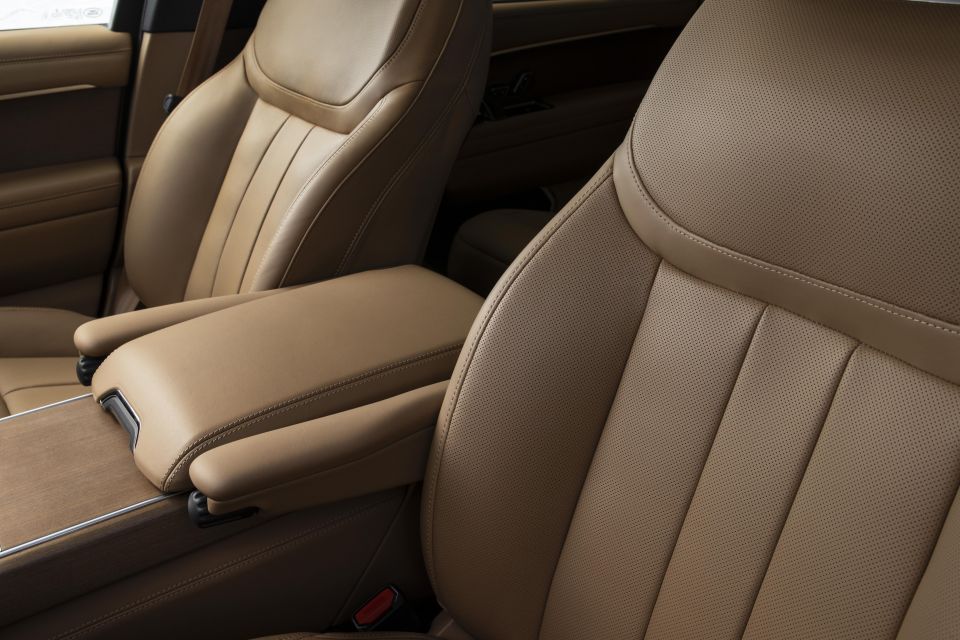
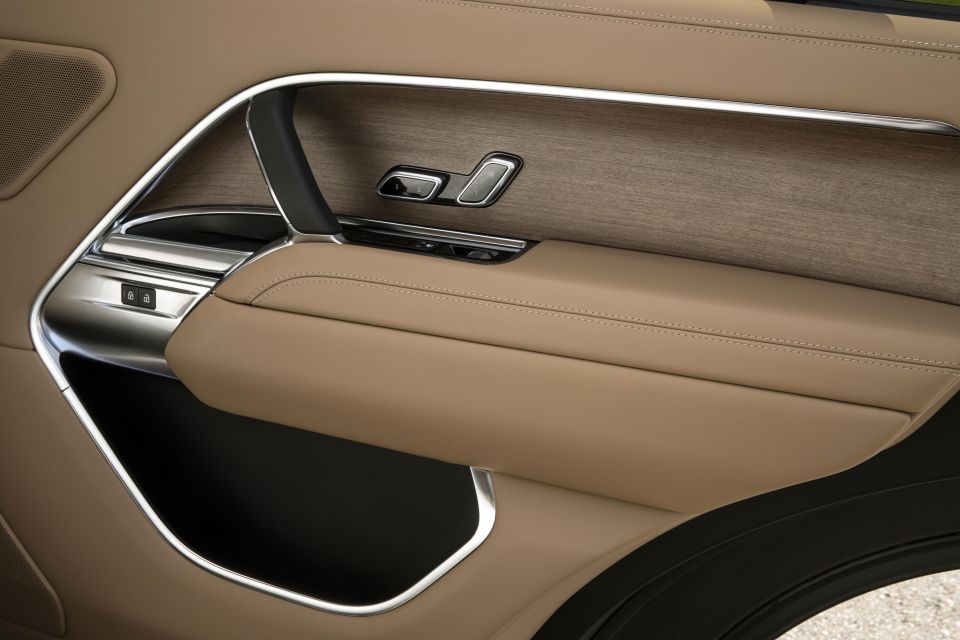
There are some gimmicky features as well, like the remote parking system that allows you to control the car via an app when standing close to it, which is actually useful if you find yourself in a tight spot, can’t open the door, and need to pull the car out first.
The usual assortment of camera systems are also included, including a 360-degree camera, a rear-view camera display in the rear-view mirror, ClearSight Ground View “transparent bonnet technology” to visualise the area hidden by the bonnet on the touchscreen, and LED ‘downlighters’ create a pool of light around you where you’re reverse parking.
Range Rover says the cabin air purification system can significantly reduce the chance of bacteria and virus (including SARS-CoV-2) getting inside. The system condenses moisture from interior air and breaks it into electrically charged particles that react with contaminants in the cabin air.
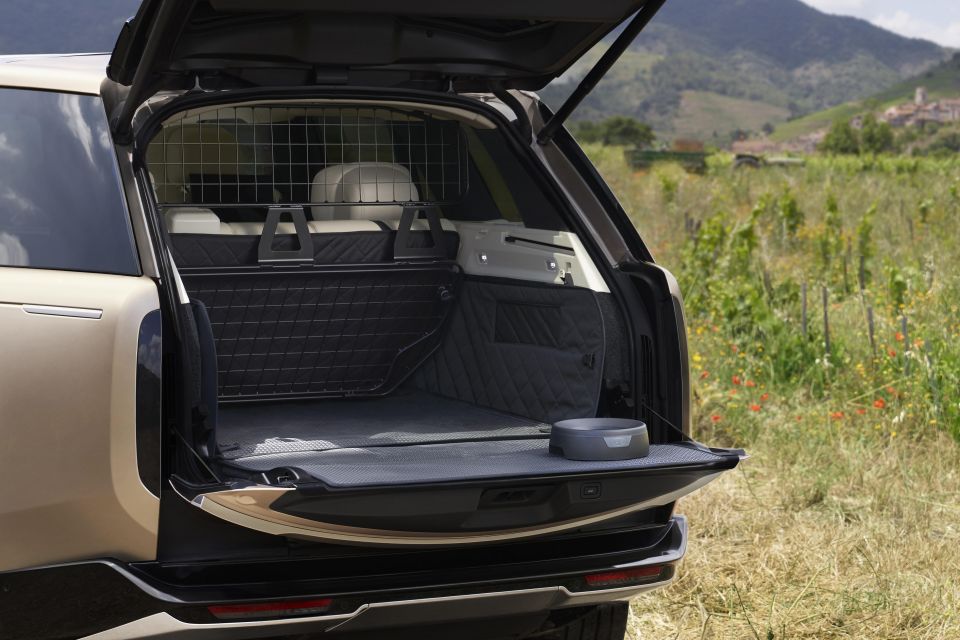
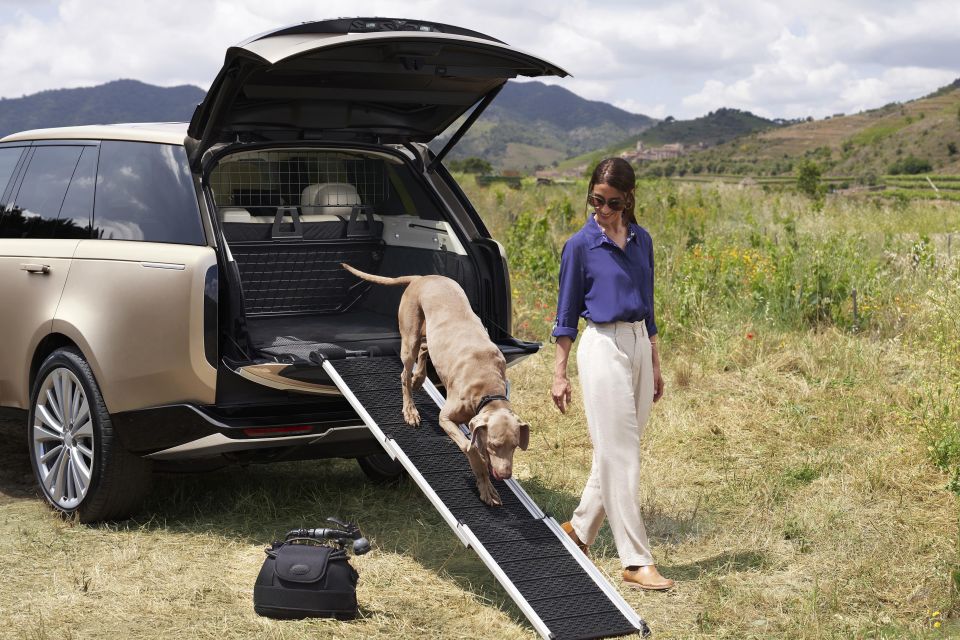
The standard Range Rover offers 725L of boot space beneath the luggage cover, 818L with the cover removed, and 1841L with the second row folded flat.
The long wheelbase also offers 725L of boot space beneath the luggage cover, but 1050L with the cover removed, and a massive 2165L with the second row folded flat.
When all seven seats are in use, the seven seater has 229L of boot space behind the third row seatbacks or 312L to the roof, 713L beneath the luggage cover with the third row folded, 1061L with the cover removed, and 2601L with the second and third rows of seating folded flat.
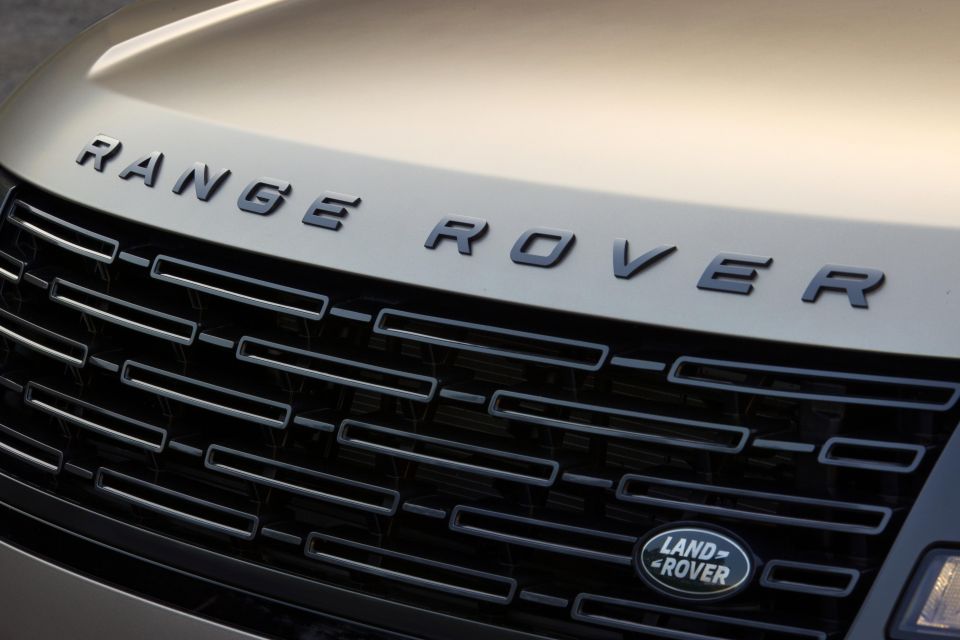
For most, the standard ‘mild-hybrid’ engines – a 3.0-litre inline-six petrol with 294kW and 550Nm (P400) and two 3.0-litre inline-six diesels with 221kW and 650Nm (D300) or 258kW and 700Nm (D350) – are obvious choices.
All three use a 48V battery and harvest brake energy to smooth out the stop/start. It’s not like a plug-in hybrid in that it has no electric-only driving capability, but it does save a bit of fuel when coasting and the engine is shut off.
Before the end of 2022, the new Range Rover will also be offered with a proper inline-six petrol plug-in hybrid that offers 375kW/700Nm outputs, a 38kWh battery, and up to 125km of electric-only range (NEDC). Additionally, the new Range Rover PHEV will offer 50kW DC charging capability.
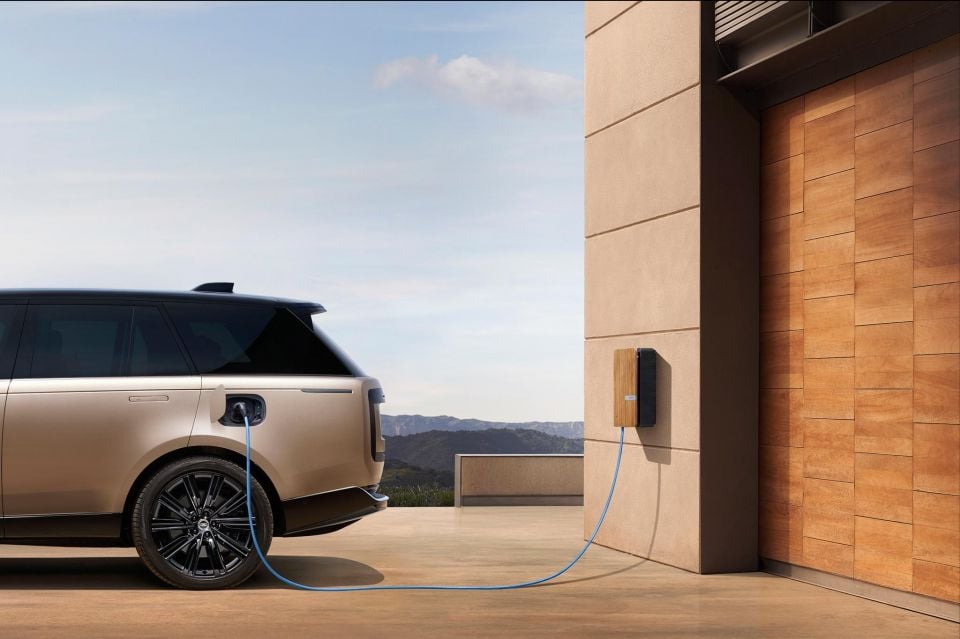
If that doesn’t do it for you (it really should as it gives best of both worlds), a fully-electric Range Rover is due to launch in 2024.
While the environmentally conscious will be catered to, Ranger Rover hasn’t forgotten its die-hard petrol heads either. Although the much-loved screaming 5.0-litre supercharged V8 is gone, the BMW-sourced 390kW/750Nm ‘P530’ 4.4-litre V8 with two twin-scroll turbos is the order of the day, slashing the 0-100km/h dash to just 4.6 seconds.
All bar the EV use a ZF eight-speed transmission with a set of low-range ratios, while maximum towing is 3500kg across the range, with a maximum 750kg unbraked capacity. The unladen weights for the short wheelbase sits between 2454kg and 2585kg, with the long wheelbase topping out at 2725kg in heaviest guise.
Fuel economy ranges from 7.2L per 100km of diesel for the D300 and D350 variants all the way to 11.8L/100km for the V8 petrol. Based on our limited testing, we would stipulate these figures will be about 20 (for diesel) to 30 (for petrol models) per cent higher in the real world.
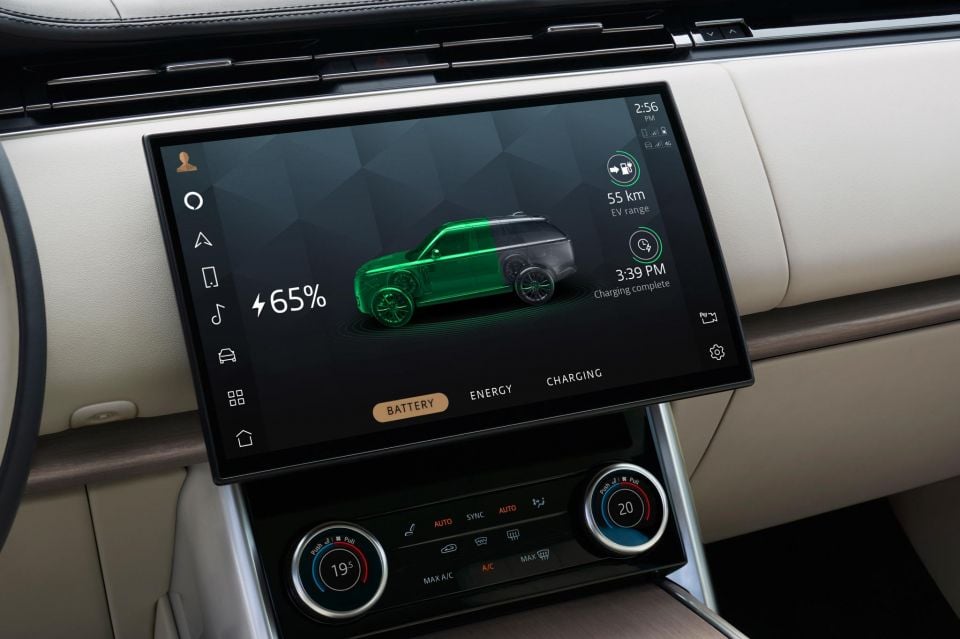
2022 Range Rover fuel economy (claimed):
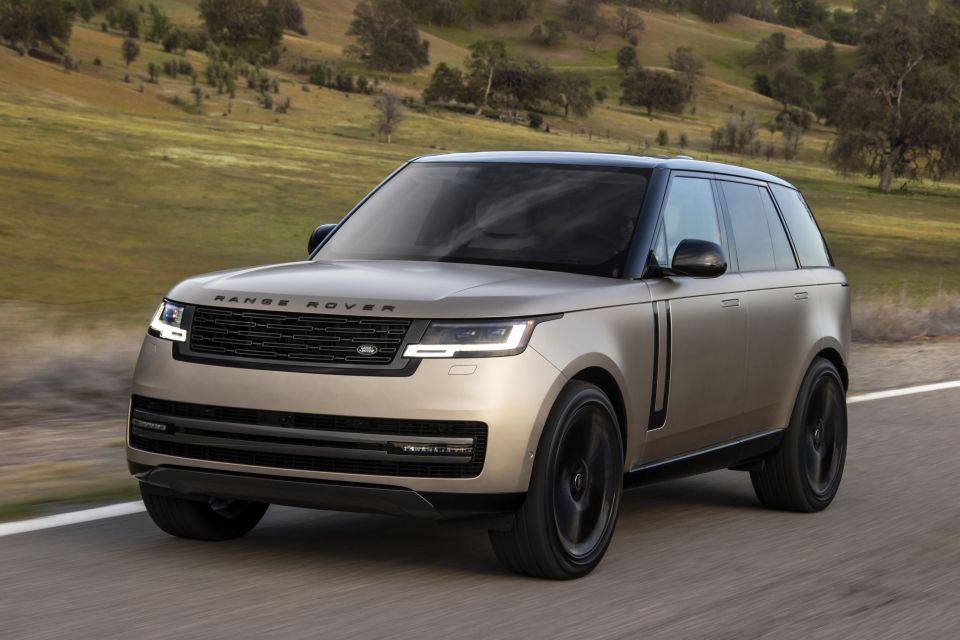
If you’re expecting agility and dynamic handling you might want to wait for the new Range Rover Sport expected next year. For now, the new Range Rover drives… well, kind of like a big Range Rover. It’s large and it feels it.
As is the case with Range Rovers of yesteryear, air suspension is order of the day and in the new model the system now restricts roll (48V active roll stabilisation) and pitch by calibrating on approach to individual bends.
According to the company’s engineers, air springs and twin-valve dampers react in as fast as five milliseconds and can prepare for the road ahead by linking to the active cruise control.
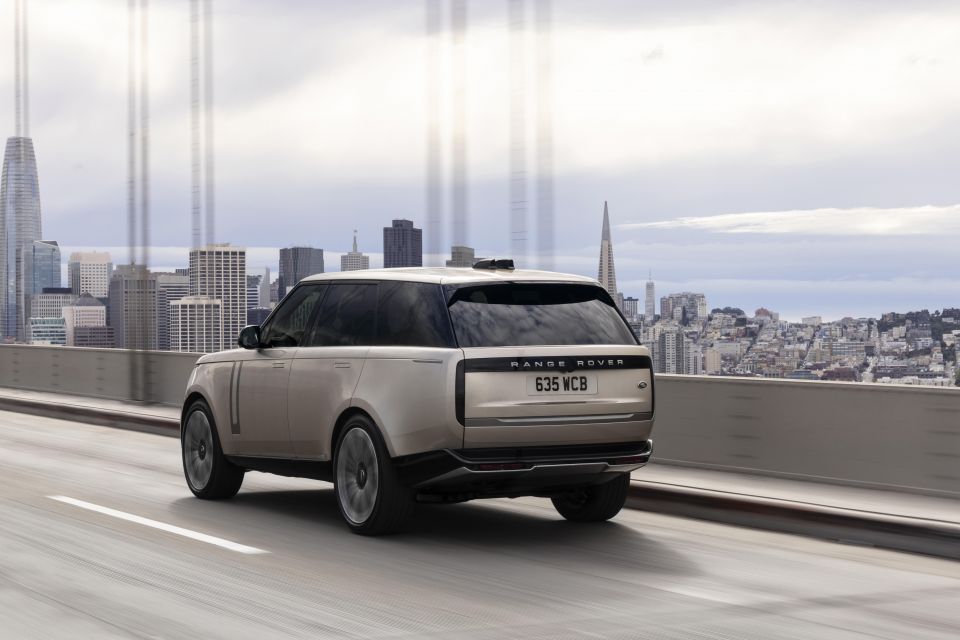
It sounds good in theory, but we can tell you from experience the new Range Rover cannot defy the laws of physics.
Although it is undoubtedly the best handling and most confidence-inspiring full-sized Range Rover to date, it’s lacking when compared to the current Range Rover Sport or Jaguar F-Pace in dynamic competency, but very much on-par with the likes of the Mercedes-Benz GLS and BMW X7.
We do love the rear-wheel steering (opposite direction at slow speeds and same direction at high speeds) which makes the turning circle much easier to manage (10.95m for SWB and 11.96m for LWB).
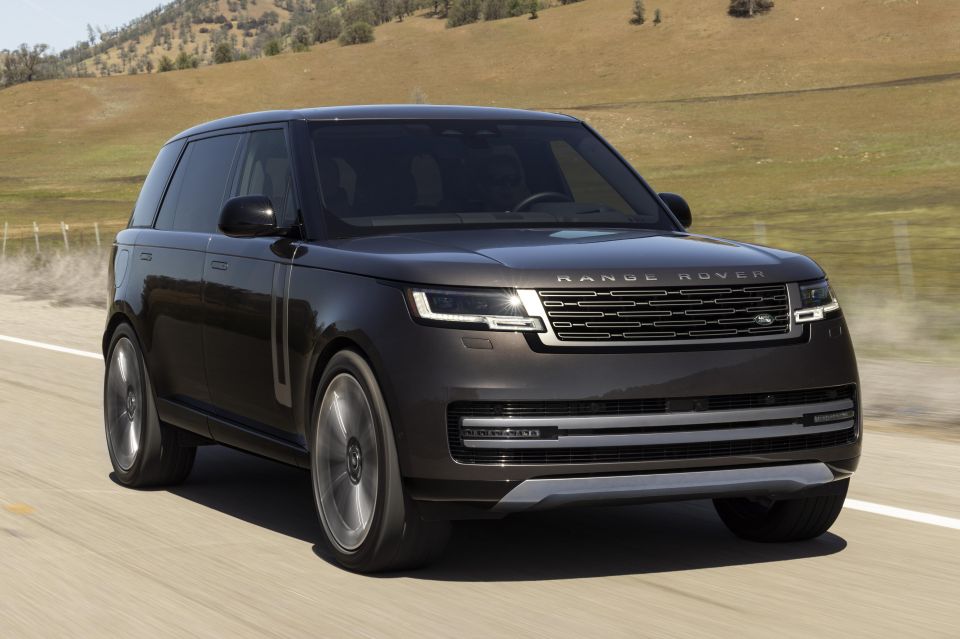
All but one of the cars we drove had 23-inch wheels (with 285/40 R23 tyres). We found the ride super plush when the road was smooth, and the car glided over speed bumps and other obstacles but had the occasional jitter when presented with larger undulations or potholes.
Not surprisingly, the 22-inch wheel variant we drove rode much smoother – although it was also a long-wheelbase version, so it’s hard to say if the wheel size or the wheelbase was the contributing factor.
Much to our amusement we also did some off-roading (yes, on 23-inch road tyres) to prove that the Range Rover is still capable of roving over ranges. While it can certainly do a lot with its low-range gearing, 50:50 rear diff lock and the same Terrain Response system as the new Defender, it’s just not the sort of car you would take off-road, even if you could.
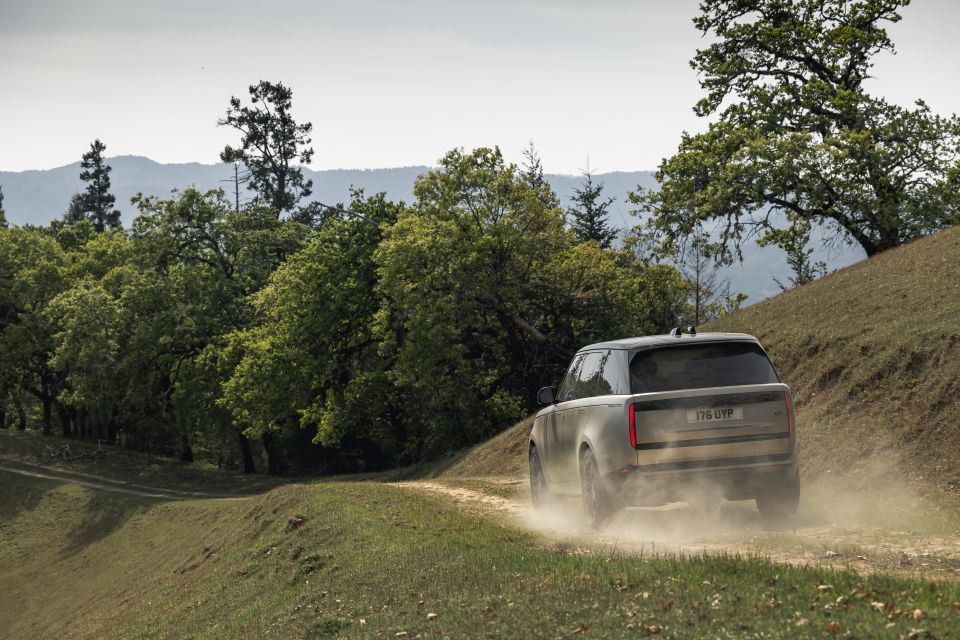
We also found the wind noise in the car to be a little peculiar.
The wing mirrors seem to generate an inordinate amount of wind noise which we initially put down to the fact the new Range Rover is so damn quiet, you can only hear the wind noise – but we need to spend more time with the car somewhere outside of windy Sonoma to see if it’s isolated or not.
Overall it’s hard to fault the Range Rover for how it drives.
It’s smooth, glides over most road imperfections and won’t complain if you push it around corners. It sits awfully flat with limited body roll, but also gives little in terms of feedback through the steering wheel.

Apart from the SV which comes with an almost endless capacity to customise, the ‘standard’ Range Rover models are available in numerous trim levels at launch, each of which comes with a choice of diesel or petrol power.
Range Rover SE highlights:


Optional on the the SE is the Technology Pack ($3820), which brings:
Range Rover HSE adds:
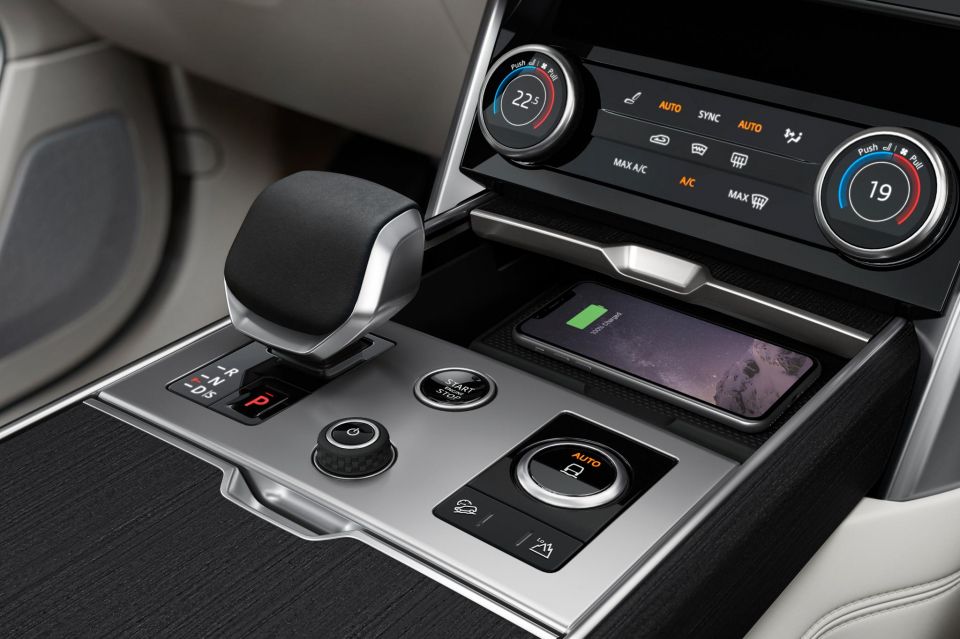
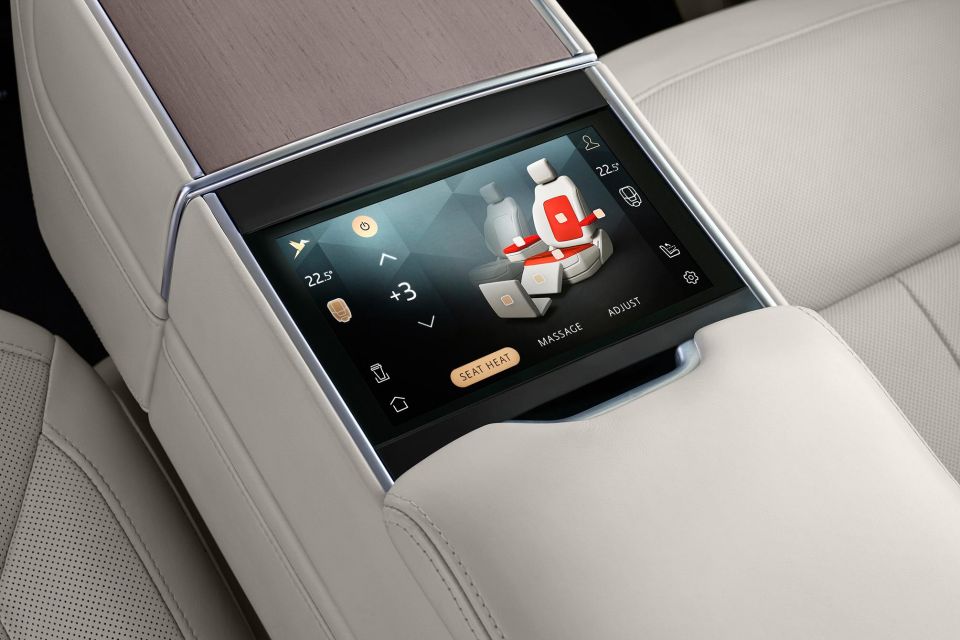
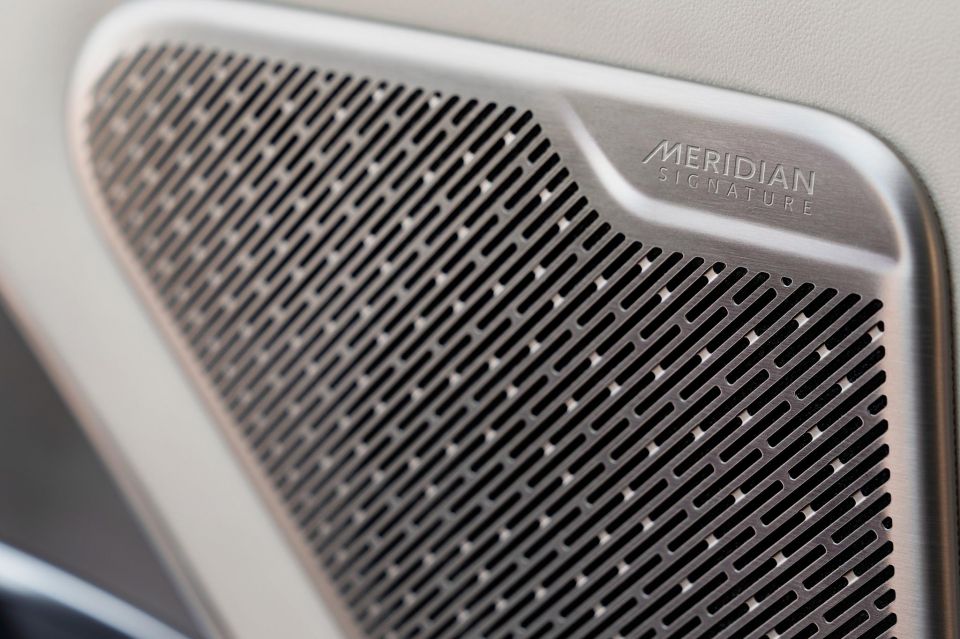

Optional on the SE and HSE are the following packages:


Range Rover Autobiography gains:

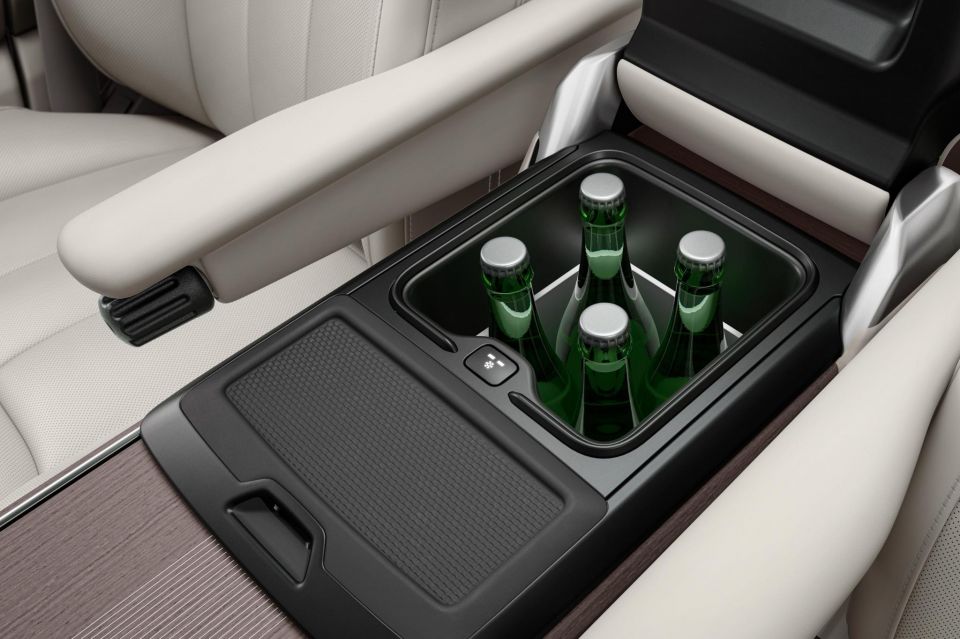
Finally, the Range Rover First Edition adds:
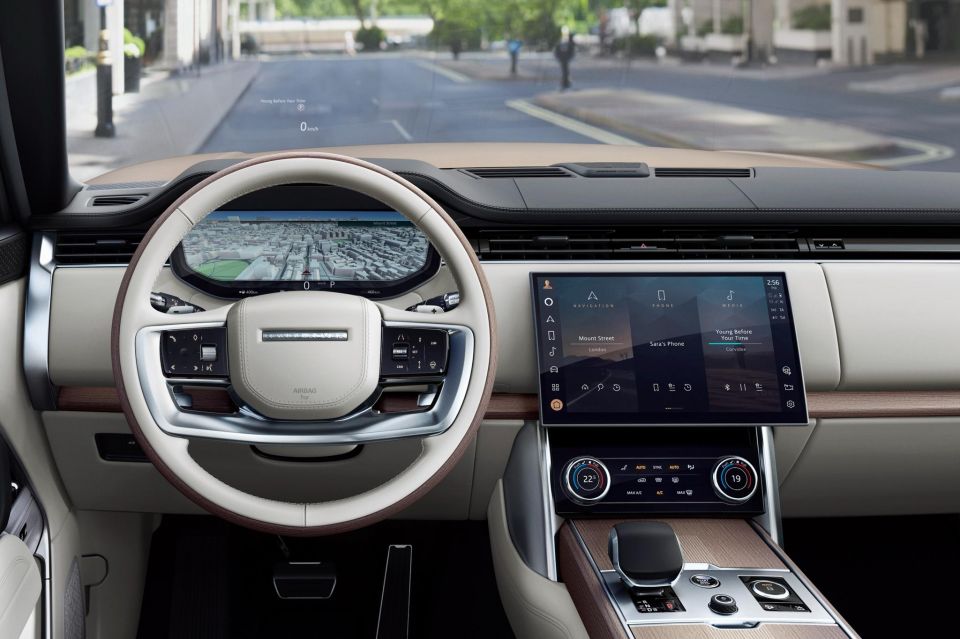
The 2022 Range Rover hasn’t been crash tested by ANCAP or Euro NCAP, although it would be safe to say it will likely score a comfortable five-star safety rating when it does.
Standard safety equipment in Australia includes:
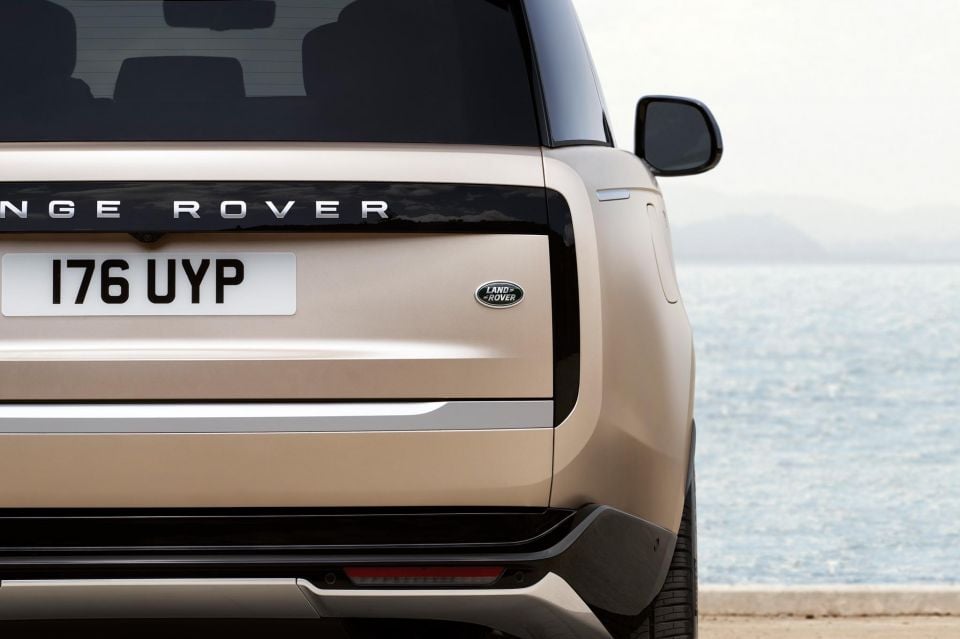
The current fourth-generation model Range Rover offers free servicing for five years in Australia, and Land Rover Australia is set to maintain the same ‘free’ running cost setup with the new generation.
In addition, like all other Land Rover product, the new Range Rover will come with a five-year, unlimited-kilometre warranty which should put your thoughts about British reliability to rest.

As we said at the start, the new Range Rover is the best luxury SUV you can buy right now. It mixes the absolute pinnacle of luxury motoring with the latest in technology and capability.
The only real question is whether you are willing to wait for the plug-in hybrid or full-electric variants, or go for another generation of the humble internal-combustion engine.
Our money is on going for what’s on offer now, then consider upgrading to a hybrid or EV in due time.
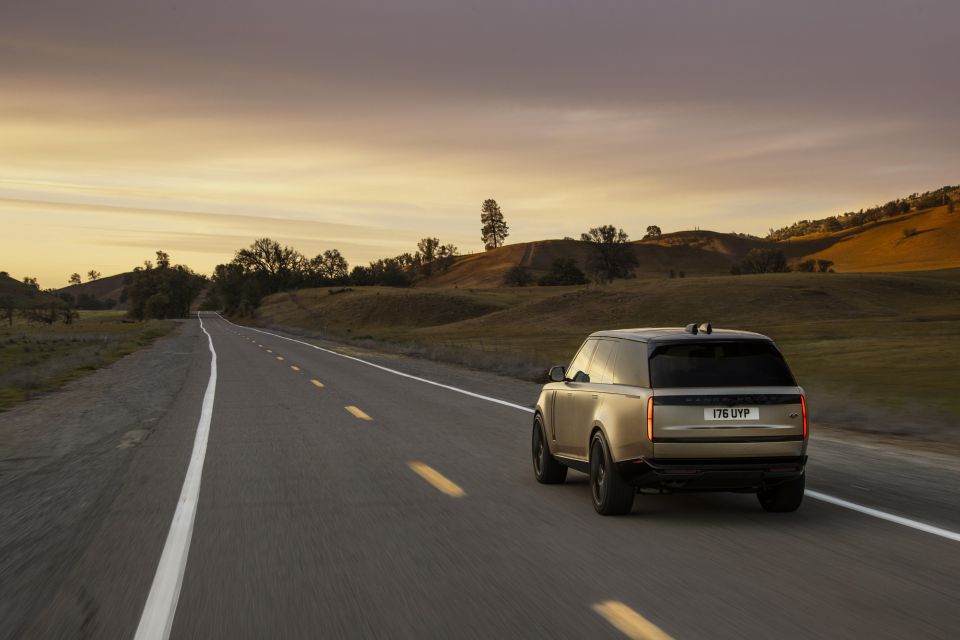
Click the images for the full gallery
MORE: Everything Range Rover
Where expert car reviews meet expert car buying – CarExpert gives you trusted advice, personalised service and real savings on your next new car.
Alborz Fallah is a CarExpert co-founder and industry leader shaping digital automotive media with a unique mix of tech and car expertise.


Damion Smy
39 Minutes Ago


Damion Smy
2 Hours Ago


Damion Smy
2 Hours Ago


Damion Smy
3 Hours Ago


Josh Nevett
3 Hours Ago
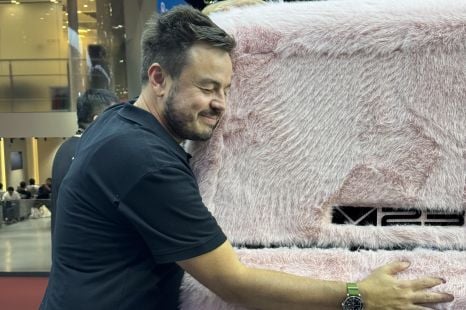

Max Davies
4 Hours Ago